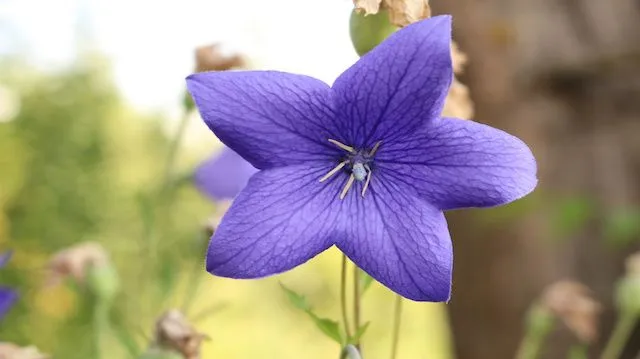
- Share on Facebook155
- Share on Pinterest
- Share on Twitter
Do you have balloon flowers in your garden? This little purple flower packs a powerful punch when it comes to fighting colds. Find out how you can use this little flower to reduce your cold symptoms and more!
What is the balloon flower?
The balloon flower gets its name from the shape of its flower bud before it fully blooms. The bud swells, looking just like a tiny, purple balloon before the flowers burst into blossom. The balloon flower (Platycodon grandiflorus from the Campanulaceae family) is native to East Asia but is common in gardens around the world.
The health benefits of the balloon flower are derived directly from the volatile active ingredients in the flower, including inulin, glucose, saponins, betulic acid and phytosterol. You may be able to find balloon flower extracts at your local health food store.
How the balloon flower fights colds
The balloon flower is best known for its ability to fight cold symptoms and relieve minor illnesses. How does it do this? The balloon flower is filled with antioxidants that stimulate healthy cell growth, including the white blood cells that fight colds and other viral infections. Additionally, the balloon flower stimulates the entire immune system, making it more efficient at fighting colds.
Not only does the balloon flower boost the immune system, it also directly benefits the respiratory system. A 2015 study published in the Journal of Ethnopharmacology found that the balloon flower has powerful expectorant properties, which work to ease congestion, break up mucus and eliminate the viruses and bacteria that cause cold symptoms. The balloon flower also possesses anti-inflammatory properties that can relieve sore throats, headaches and other minor aches and pains from viral illnesses.
Other health benefits of the balloon flower include the following:
Relief from stomach pain
The 2015 study found that the balloon flower contains compounds known as saponins, which are soothing to the stomach and can control the level of acid in the stomach, easing the pain of cramps, ulcers and other common stomach conditions. Combined with the anti-inflammatory properties of the flower, the balloon flower is extremely beneficial for fighting stomach pain.
Pain relief
The balloon flower contains compounds that have minor pain-relieving properties. The root of the plant is particularly effective at fighting minor pain associated with inflammation. A study published by the National University of Pharmacy stated that the balloon flower root can be used to relieve pain caused by arthritis, gout and other inflammatory conditions.
Heart health
Damage to the heart is often caused by oxidation and chronic inflammation in the heart and blood vessels. The balloon flower can reduce cholesterol levels and increase the “good” cholesterol that fights inflammation and heals the body. This level of healing provides benefits for overall heart health and can reduce the risk of developing a stroke or heart attack.
To treat a cold, you can take balloon flower in one of two separate ways:
Supplement form
The balloon flower root, leaves, and flowers are ground to a powder and added to capsules to make them easy to take. Swallow 3–5 capsules a day until cold symptoms subside.
Herbal form
Some Chinese stores sell the balloon flower and plant as a whole herb. Add the herb to salads, sauté it as a side dish, or crumble it and add the leaves to dishes you cook at home. When you feel a cold coming on, brew a tea with the balloon flower leaves and roots and drink 2–4 cups of the tea daily until symptoms subside.
The balloon flower may be a small plant, but its health benefits are mighty. Add the balloon flower to your herbal medicine cabinet today to fight cold symptoms fast.
-Brenda Priddy
Brenda is a writer, chef and health nut with many years of writing experience in the alternative health industry. She specializes in health news, healthy living, alternative treatments, and healthy recipes. She loves educating others about sustainable, healthy living. Brenda lives in Texas with her husband and two daughters.
Sources:
http://www.sciencedirect.com/science/article/pii/S0378874115000677
http://en.cnki.com.cn/Article_en/CJFDTOTAL-NMSB201206019.htm
http://bmccomplementalternmed.biomedcentral.com/articles/10.1186/1472-6882-12-173
http://dspace.nuph.edu.ua/handle/123456789/7150
- Share on Facebook155
- Share on Pinterest
- Share on Twitter

